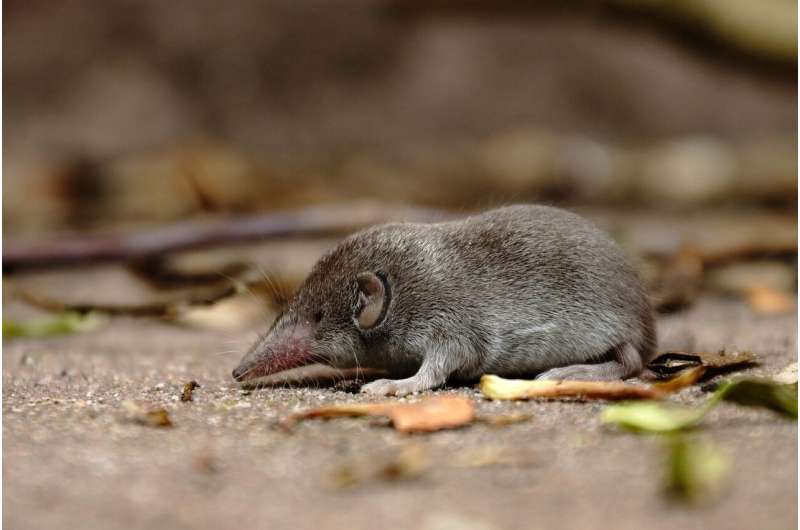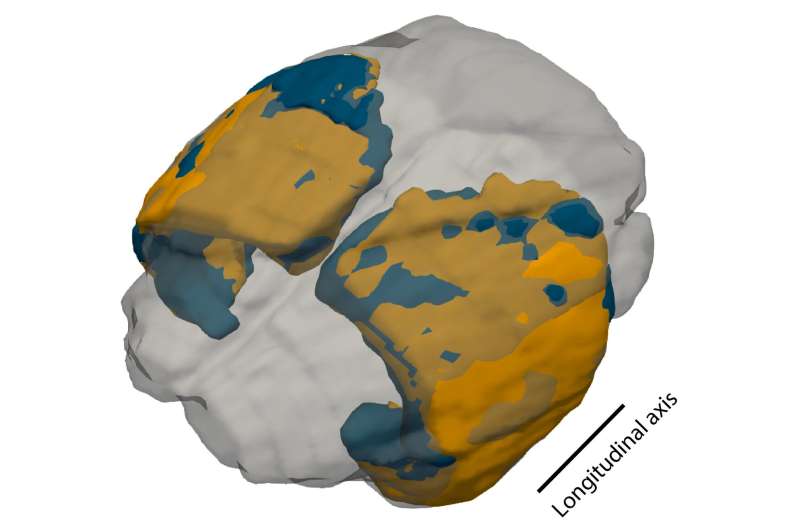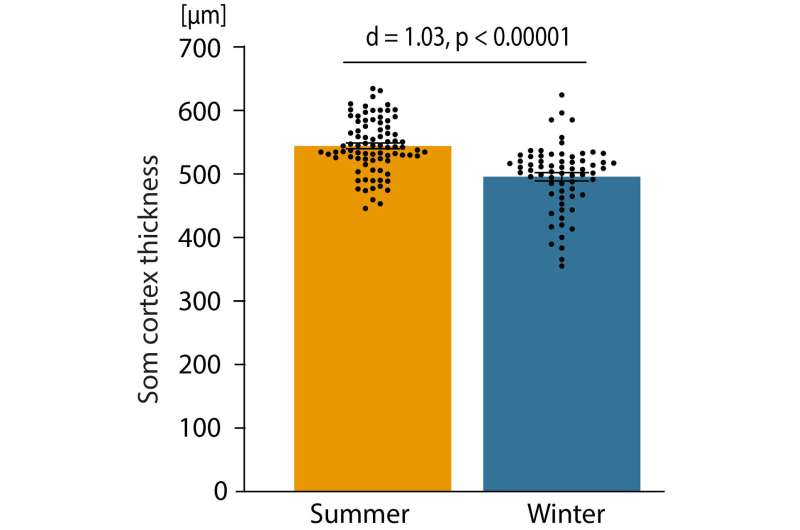How the shrew brain adapts to winter

Seasonal, energy-conserving neural adaptions could allow shrews to reduce their metabolic demands during winter, a study finds. Animals adapt to changing environmental conditions such as seasonal cycles to enhance their chances of survival. Although seasonal variation is associated with well-known behavioral patterns such as hibernation, the effects on the brain have not been clear. To address this question, Saikat Ray, Robert Naumann, and colleagues examined seasonal changes in neural structure and activity in the smallest terrestrial mammal—the Etruscan shrew—which faces extreme physiological demands and adversity during winter due to its exceptionally high metabolic rate and low energy reserves.
The authors next used magnetic resonance imaging, microstructural analysis of cortical tissue sections, and two-photon calcium imaging. The only brain region that consistently shrank during winter was the cerebral cortex, which was 10% thinner during winter than in summer. The authors focused on somatosensory cortex, which plays a critical role in the sense of touch, which shrews rely on to capture prey. Layer 4, which is the most metabolically active layer of somatosensory cortex, was 28% thinner and had fewer neurons in winter than in summer. Moreover, the fraction of layer 4 neurons suppressed upon whisker stimulation during spring and summer was 2.3-fold higher than that in autumn and winter. In addition, there were fewer parvalbumin-positive interneurons—one of the most metabolically active neuronal subtypes in layer 4 of somatosensory cortex—in winter than in summer. Because parvalbumin-positive interneurons are inhibitory, a reduction in these neurons could contribute to the drastic decrease in suppressive neuronal responses to touch during winter.

Additional results suggest that paucity of food is sufficient to cause seasonal changes in cortical volume—independent of temperature or the light-dark cycle, which remained constant during the experiments. According to the authors, the findings suggest that lowering the threshold for detecting whisker stimulation could make shrews less choosy about which prey to consume in the winter, when food is more restricted and millipedes become more palatable. The authors also note that the study offers insights on how neural systems show adaptive plasticity in response to ecological demands.

More information: Saikat Ray et al. Seasonal plasticity in the adult somatosensory cortex, Proceedings of the National Academy of Sciences (2020). DOI: 10.1073/pnas.1922888117
Journal information: Proceedings of the National Academy of Sciences
Provided by Humboldt University





















